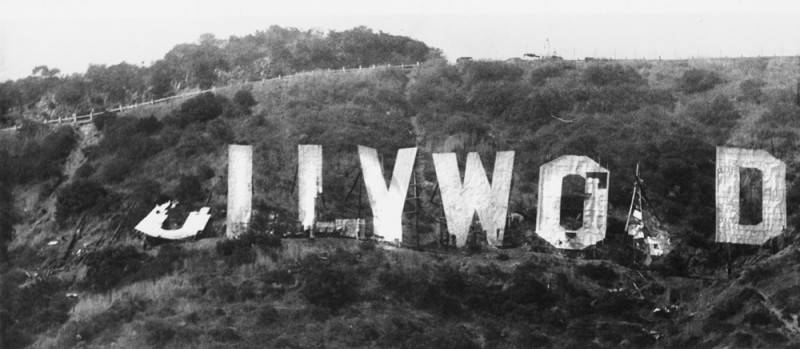In a city that has always been short on postcard landmarks, there is arguably no more recognizable symbol of Los Angeles than the Hollywood sign. For many visitors, and even many Angelenos, it exists as a kind of platonic emblem—eternal, unchanging—of the city and the entertainment business: nine letters, each 45 feet tall and as white as an actor’s teeth, perched at the top of Mount Lee.
In truth, as civic symbols go, the Hollywood Sign has lived a changeable and even tumultuous life—one that evokes many of the themes that undergird the various sections of this report and its recommendations. One such theme is the unusual number of landmarks and memorials that persist here despite being designed, long ago, to be temporary, or for some purpose far removed from history, memorialization or garden-variety nostalgia. Another is the importance of maintenance and care—upkeep, rather than creation from whole cloth—to the work of civic and cultural memory.
Built in 1923 at a cost of $21,000, including its system of hidden bulbs to illuminate it at night, the sign originally read “HOLLYWOODLAND” and marked the opening of a high-end residential subdivision financed in part by Los Angeles Times publisher Harry Chandler. It was meant to stand for just a year and a half. The final four letters were removed in 1949 after the Hollywood Chamber of Commerce agreed to repair and rebuild it. This gave rise to a new period in which the sign began to stand in for the movie business and the larger relationship between Los Angeles and filmmaking.
By the 1970s, the sign had badly decayed and fallen into near ruin, a fate similar to that of Hollywood the literal civic district, the place on the map, as opposed to Hollywood the glamourous ideal. (By then every studio but Paramount had decamped from Hollywood proper to the San Fernando Valley or further afield.) That’s the state the photographer Ken Papaleo, shooting for the Herald-Examiner, found it in when he captured this image in 1978. A campaign (led improbably enough by Playboy magazine founder Hugh Hefner, among others) was launched to raise money to bring the sign back to life. Donors were able to adopt a letter for a gift of just under $28,000 each, or $250,000 in all. By the end of 1978 it had been fully restored, its letters newly and securely anchored on new footings before being repainted.
That shine, too, faded over time, and in 2005 the Chamber launched another restoration effort, this one financed by Bay Cal Commercial Painting. The sign, however, is nearly big enough to require continual painting and upkeep, as bridges do. When you’ve finished touching up the letter D, in other words, it may be time to begin again with the H. ●

